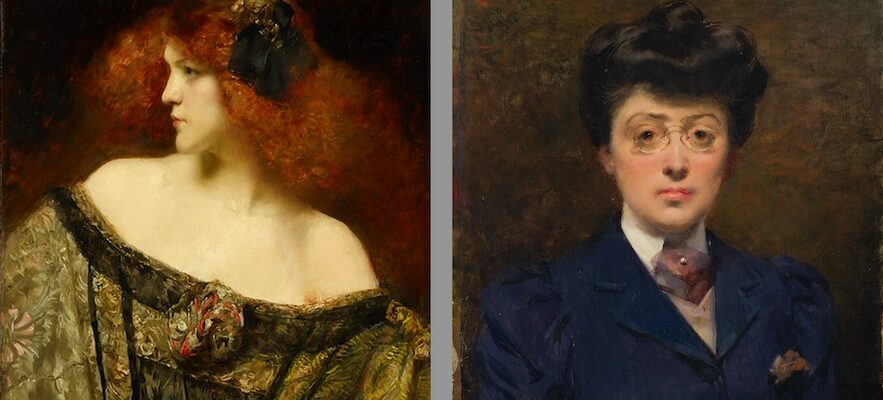It was a hundred and fifty years ago and some dust. In this year 1874, which saw the birth of Impressionism, Jean-Jacques Henner, 45 years old, was asked by Carolus-Duran to assist him in the “ladies’ workshop” which he had just founded. The two eminent painters took advantage of the fashion for private academies reserved for women which were then flourishing in the capital. If female painting has long remained a recreational art confined to the domestic sphere, many young girls now dream of another path. Problem: in addition to the moral, legal, logistical or financial obstacles that stand before the applicants, they are refused access to the School of Fine Arts – there is no question of putting them face to face with nude male models.
So there remain these alternative places to benefit from serious artistic training. The one run by Carolus-Duran and Henner at 81, boulevard du Montparnasse, then at 17, quai Voltaire from 1877, is running at full speed. Already experienced French or foreign women come to perfect their skills. After its closure in 1889, Jean-Jacques Henner continued to receive his most promising students in his personal workshop, Place Pigalle.
Who were these women? What connections did they form with their mentor? What was their destiny? Under the leadership of Maëva Abillard and Marie Vancostenoble, the Jean-Jacques Henner museum in Paris carried out the investigation. The curators hunted down the archives, the paintings, sometimes scattered among individuals, to give a name, a face, a palette to around ten artists.
Their names are Dorothy, Hortense, Juana, Marie or Ottilie. They are married, with children, single or even single mothers. Their production highlights several “Hennerian” themes such as religious subjects, fantasy heads or even nymphs, like Eugénie-Marie Gadiffet-Caillard, known as Germaine Dawis. However, the portrait remains the most used register for these ladies – self-portraits, portraits of women, but also of men and children which the upper bourgeoisie adores.
“Desdemona”, 1903, by Juana Romani. On the right. : “Self-portrait”, second half of the 19th century, by Louise Abbéma.
/ © City of Courbevoie © Intercommunal Museum of Etampes.
Until his death in 1905, Jean-Jacques Henner provided advice and encouragement to his protégés, maintaining long-term correspondence with some. At the turn of the 20th century, things finally changed. In 1897, women were authorized to take theoretical courses in Fine Arts. That’s always the case. Two years later, they were finally able to access nude sessions on an equal footing with men, then, from 1903, compete for the Prix de Rome, even if it would be two more decades before a painter won the prestigious distinction.
Henner’s flock, They (the title of the exhibition), will experience varying fortunes: Louise Abbéma, the best known of the group, will have a brilliant career, praised many times during her lifetime in France and abroad. Hortense Bücher, the pretty redhead, the master’s model, will try her hand at painting and will exhibit four times at the Salon des artistes français. Despite her remarkable beginnings, Marie Cayron-Vasselon gradually abandoned her easel to devote herself to her family life. The Swiss Ottilie Roederstein will take her boat to Frankfurt where she will rise to the rank of first portrait painter in the city. The Englishwoman Dorothy Tennant married the explorer Stanley and gradually disengaged from art in favor of politics. As for the Italian Juana Romani, also an ex-model, she will experience a tragic fate like Camille Claudel: a dazzling artistic trajectory interrupted by psychiatric disorders which will lead her to the grave twenty years later, forgotten by all.
They. The students of Jean-Jacques Henneruntil April 28, 2025 at the Jean-Jacques Henner National Museum (Paris 17th century).
.
